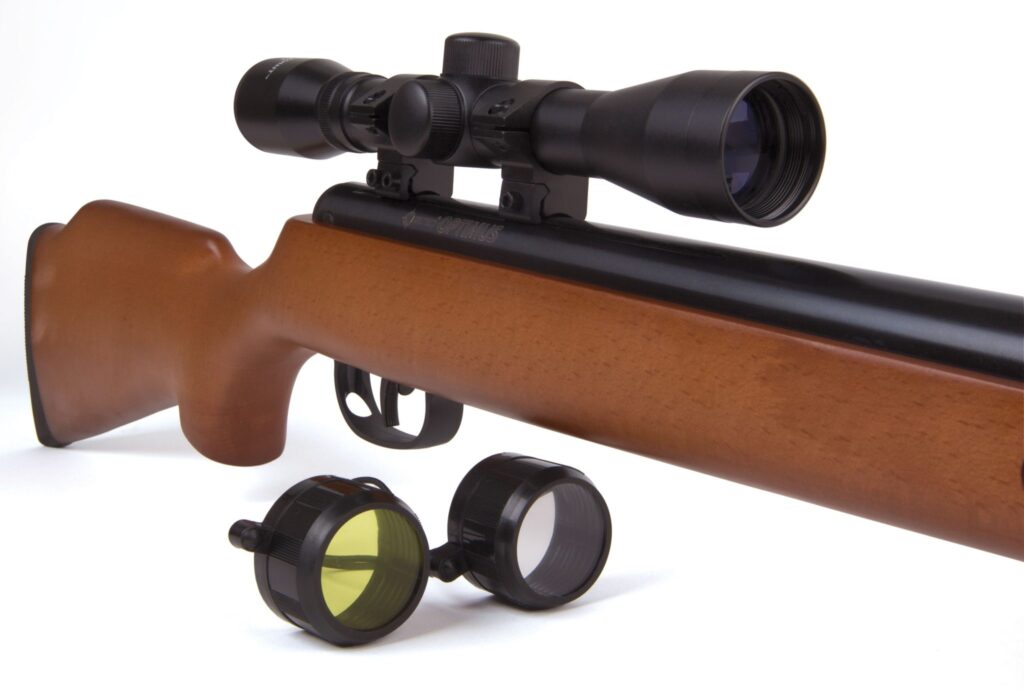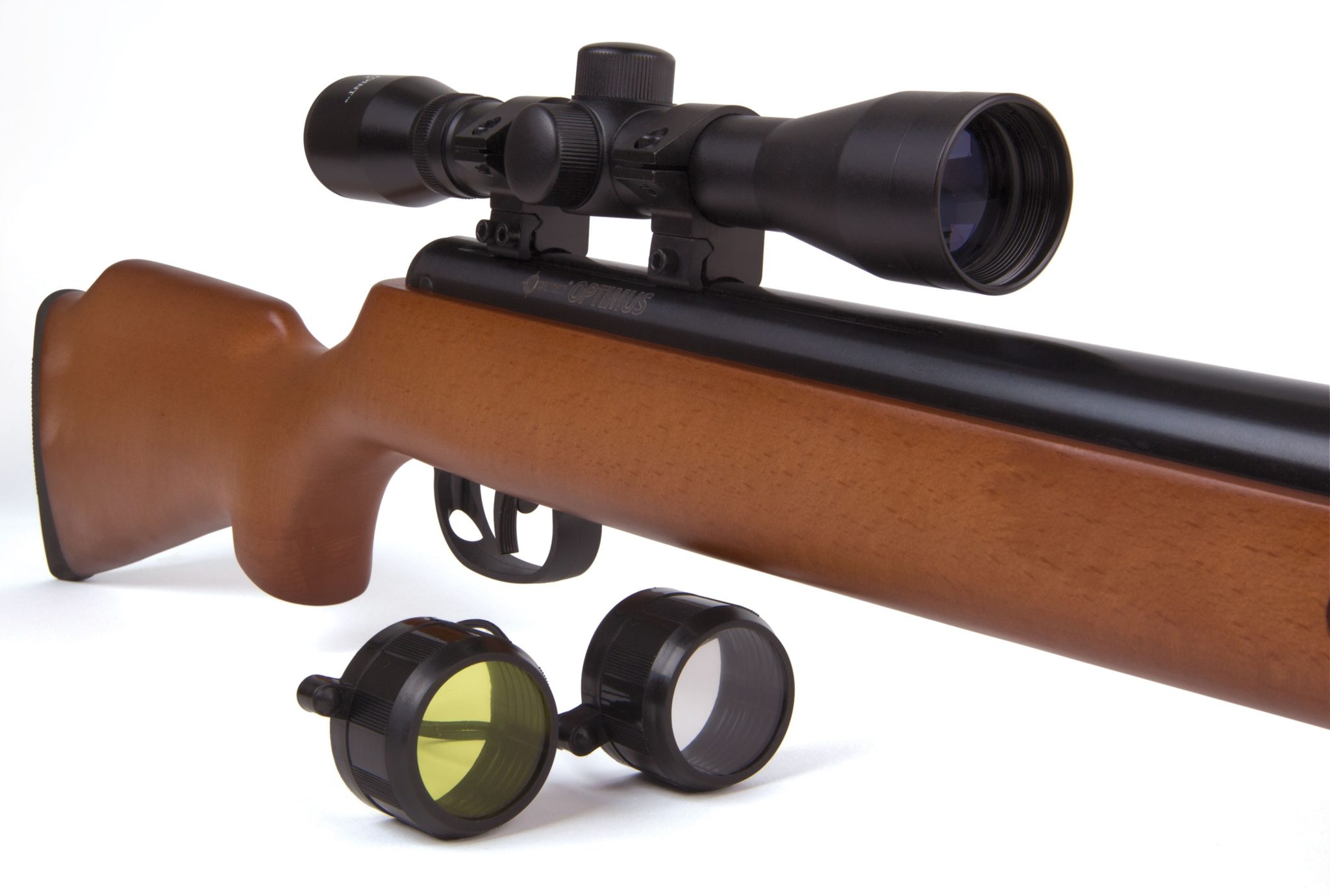
Choosing the Right Pellet Rifle Scope: A Comprehensive Guide
Selecting the perfect pellet rifle scope can significantly enhance your shooting accuracy and overall experience. Whether you’re a seasoned marksman or just starting out, understanding the key features and considerations will ensure you make an informed decision. This guide provides a comprehensive overview of pellet rifle scopes, helping you navigate the market and find the ideal optic for your needs.
Understanding Pellet Rifle Scopes
Unlike scopes designed for firearms, pellet rifle scopes are specifically engineered to withstand the unique recoil characteristics of airguns. Spring-piston air rifles, in particular, produce a double recoil – a forward jolt followed by a backward kick – that can damage or even destroy standard firearm scopes. Pellet rifle scopes are built with robust internals and recoil-resistant designs to endure these stresses.
Why Use a Dedicated Pellet Rifle Scope?
Using a scope designed for firearms on a pellet rifle might seem like a cost-effective option, but it’s generally not recommended. The recoil patterns are different, and firearm scopes may not hold zero or provide accurate adjustments when used on airguns. A dedicated pellet rifle scope offers several advantages:
- Durability: Built to withstand the specific recoil of airguns.
- Accuracy: Calibrated for the typical ranges and ballistics of pellet rifles.
- Warranty: Often covered by warranties that specifically address airgun use.
Key Features to Consider
When choosing a pellet rifle scope, several factors come into play. Here’s a breakdown of the most important features to consider:
Magnification
Magnification determines how much the scope enlarges the target image. Lower magnification (e.g., 3-9x) is suitable for close-range shooting and hunting small game, while higher magnification (e.g., 4-16x or higher) is beneficial for long-range target shooting. Adjustable magnification scopes offer versatility for various shooting scenarios. Consider the typical distances you’ll be shooting at when selecting magnification.
Objective Lens Diameter
The objective lens diameter affects the amount of light that enters the scope. A larger objective lens (e.g., 40mm or larger) provides a brighter and clearer image, especially in low-light conditions. However, larger objective lenses also add weight and bulk to the scope. Balance light gathering capabilities with size and weight considerations.
Reticle Type
The reticle is the aiming point inside the scope. Common reticle types include:
- Duplex: A simple crosshair reticle that is easy to use and provides a clear aiming point.
- Mil-Dot: Features dots or hash marks along the crosshairs, allowing for range estimation and holdover adjustments.
- BDC (Bullet Drop Compensating): Calibrated for specific bullet trajectories, providing holdover points for different distances.
- Illuminated: Reticles that are illuminated with a red or green light, improving visibility in low-light conditions.
Choose a reticle type that suits your shooting style and the types of targets you’ll be engaging. For hunting, a simple duplex or illuminated reticle may be preferable. For target shooting and long-range engagements, a mil-dot or BDC reticle can be advantageous.
Parallax Adjustment
Parallax is the apparent shift in the position of the reticle relative to the target when the shooter’s eye moves. Parallax adjustment allows you to correct this error, ensuring that the reticle and target are on the same focal plane. This is particularly important for accurate shooting at longer distances. Scopes with adjustable parallax are often marked with distances, allowing you to dial in the correct setting for your target.
Turrets and Adjustments
The turrets are used to adjust the scope’s windage and elevation. Windage adjusts the horizontal position of the reticle, while elevation adjusts the vertical position. Turrets are typically marked in MOA (Minute of Angle) or MRAD (Milliradian). Scopes with exposed turrets allow for quick and easy adjustments in the field, while capped turrets provide more protection against accidental adjustments. Consider the type of adjustments you’ll need to make and choose a scope with turrets that meet your requirements.
Eye Relief
Eye relief is the distance between your eye and the scope’s eyepiece when you can see a full and clear image. Proper eye relief is crucial for comfortable and safe shooting. Insufficient eye relief can result in “scope bite,” where the scope recoils into your eye. Choose a scope with adequate eye relief for your shooting position and the type of pellet rifle you’re using.
Scope Mounts
The scope mounts are used to attach the scope to the pellet rifle. It is important to choose mounts that are compatible with both the scope and the rifle. Common types of scope mounts include:
- Dovetail Mounts: Fit onto a dovetail rail on the rifle’s receiver.
- Picatinny/Weaver Mounts: Attach to a Picatinny or Weaver rail, providing a more secure and versatile mounting platform.
- One-Piece Mounts: Offer greater stability and alignment compared to separate rings.
Ensure that the scope mounts are properly installed and tightened to prevent the scope from shifting during shooting.
Top Pellet Rifle Scope Brands
Several reputable brands offer high-quality pellet rifle scopes. Some of the most popular include:
- Leapers UTG: Known for their durable and affordable scopes with a wide range of features.
- Hawke Optics: Offers a variety of scopes designed specifically for airgun use, with excellent optical quality and features.
- CenterPoint: Provides affordable and reliable scopes suitable for beginners and casual shooters.
- Bushnell: A well-known optics manufacturer with a range of scopes suitable for pellet rifles.
Research different brands and models to find a scope that meets your specific needs and budget. Read reviews and compare specifications to make an informed decision.
Choosing the Right Scope for Your Needs
The best pellet rifle scope for you will depend on your individual needs and shooting style. Consider the following factors when making your decision:
- Type of Shooting: Are you primarily target shooting, hunting, or plinking?
- Typical Shooting Distances: How far are you typically shooting?
- Budget: How much are you willing to spend on a scope?
- Personal Preferences: Do you prefer a simple or more complex reticle? Do you need adjustable parallax?
By carefully considering these factors, you can narrow down your options and find the perfect pellet rifle scope for your needs. Don’t hesitate to seek advice from experienced shooters or consult with experts at your local gun shop.
Tips for Maintaining Your Pellet Rifle Scope
Proper maintenance is essential for ensuring the longevity and performance of your pellet rifle scope. Here are a few tips to keep your scope in top condition:
- Keep the lenses clean: Use a lens cleaning cloth and solution to remove dust, dirt, and fingerprints from the lenses.
- Protect the scope from moisture: Store the scope in a dry place to prevent corrosion and fogging.
- Check the mounts regularly: Ensure that the scope mounts are properly tightened to prevent the scope from shifting.
- Avoid exposing the scope to extreme temperatures: Extreme temperatures can damage the scope’s internal components.
By following these simple maintenance tips, you can extend the life of your pellet rifle scope and ensure that it performs optimally for years to come.
Conclusion
Choosing the right pellet rifle scope is a crucial step in enhancing your shooting accuracy and enjoyment. By understanding the key features, considering your individual needs, and following proper maintenance practices, you can find the perfect optic for your pellet rifle. Take your time, do your research, and invest in a quality scope that will provide years of reliable performance. Happy shooting!
[See also: Air Rifle Accuracy Tips]
[See also: Best Pellet Guns for Beginners]

